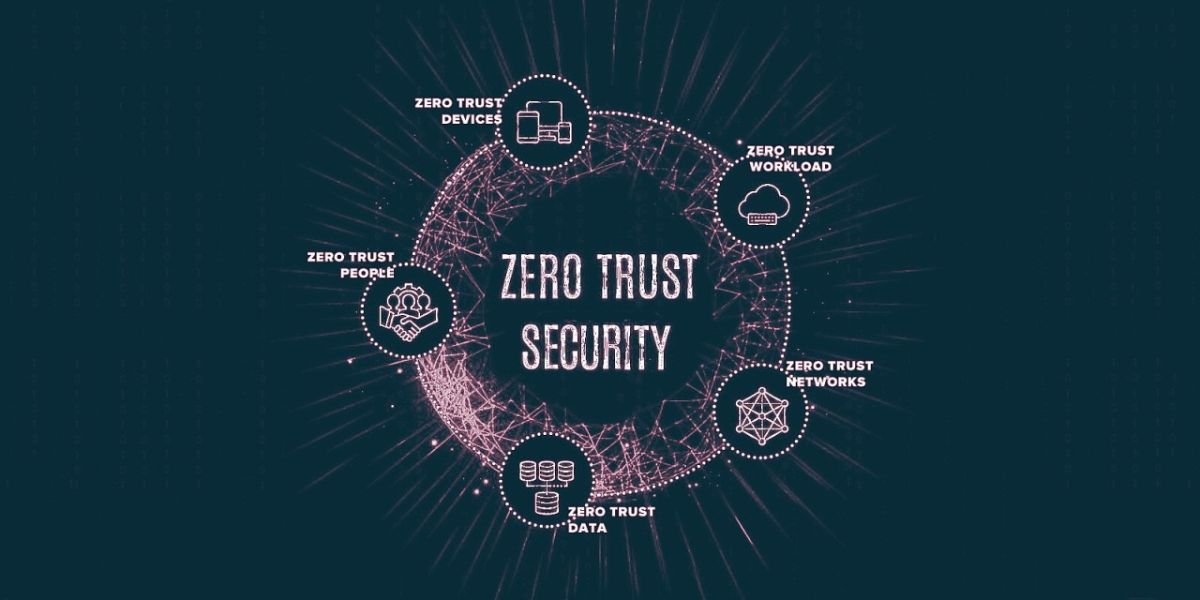
In the dynamic realm of cloud hosting, security stands as the cornerstone of trust. As businesses increasingly migrate to cloud server hosting, the paradigm of security is evolving. Enter the Zero-Trust Architecture – a revolutionary approach reshaping the landscape of cloud security. In this discourse, we delve into the intricacies of this cutting-edge concept, exploring its nuances and unraveling its potential to redefine the very essence of safeguarding data in the cloud.
The Foundation: Understanding Zero-Trust
To comprehend the significance of Zero-Trust Architecture, we must first strip away conventional notions of trust. Unlike traditional security models that operate on the assumption of trust within a network, Zero-Trust challenges this, advocating for stringent verification regardless of the user or device. This fundamental shift in mindset ensures that no entity is inherently trusted, emphasizing continuous verification and authentication.
Shifting Paradigms
Traditional security models have faced challenges in adapting to the fluidity of cloud environments. Zero-Trust addresses these limitations by acknowledging the dynamic nature of cloud hosting. This approach considers every access attempt as potentially malicious, demanding verification at each step, thereby mitigating risks in a cloud-native world.
Key Tenets of Zero-Trust
Implementing Zero-Trust Architecture involves embracing key principles that collectively bolster security measures in cloud hosting environments.
Micro-Segmentation: Fortifying Defenses
Micro-segmentation, a core tenet of Zero-Trust, involves dividing the network into isolated segments, restricting lateral movement of threats. This approach minimizes the impact of a security breach, limiting unauthorized access to specific segments and enhancing overall resilience.
Continuous Monitoring and Verification
A proactive security stance is achieved through continuous monitoring and verification. Zero-Trust insists on real-time assessment of user behavior and device integrity, promptly identifying and addressing potential threats. This constant vigilance forms an integral part of the architecture’s robust defense mechanism.
Implementing Zero-Trust in Cloud Hosting
Selecting the Right Cloud Hosting Providers
Choosing the best cloud hosting provider is pivotal in the successful implementation of Zero-Trust. Opt for providers with a proven track record in security protocols, ensuring they align with the principles of Zero-Trust Architecture.
Cloud Hosting Best Practices
Adhering to cloud hosting best practices further reinforces the effectiveness of Zero-Trust. Encrypting data in transit and at rest, enforcing strong access controls, and regularly updating security protocols are imperative steps in fortifying cloud-based infrastructures.
The Future of Security: Zero-Trust Adoption
As organizations recognize the paramount importance of cloud security, Zero-Trust Architecture emerges as a beacon of resilience in an era marked by digital transformation.
Final Words
In a landscape where the cloud reigns supreme, security becomes the linchpin for sustainable success. Zero-Trust Architecture offers not just a paradigm shift but a transformation in how we perceive and implement security. Embrace the future of cloud hosting with trust born out of verification, not assumptions.
Commonly Asked Questions
Q1: Why is Zero-Trust Architecture crucial for cloud hosting?
A1: Zero-Trust ensures a proactive security stance, countering the dynamic threats prevalent in cloud environments, and fortifying defenses through continuous monitoring.
Q2: How does micro-segmentation enhance security in Zero-Trust?
A2: Micro-segmentation limits lateral movement of threats by isolating network segments, minimizing the impact of security breaches and enhancing overall resilience.
Q3: What role do cloud hosting providers play in Zero-Trust implementation?
A3: Choosing reputable cloud hosting providers aligning with Zero-Trust principles is essential for a robust security foundation in the cloud.
Q4: What are the best practices for securing data in cloud hosting?
A4: Encrypting data, enforcing strong access controls, and regular security updates are crucial best practices for securing data in cloud hosting environments.
Q5: How does Zero-Trust cater to the future of security?
A5: Zero-Trust Architecture anticipates and addresses emerging threats, making it a forward-looking approach that aligns seamlessly with the evolving landscape of cloud security.
Advertisement








